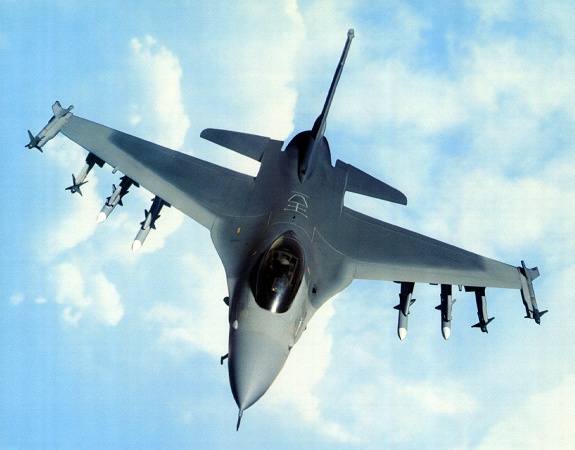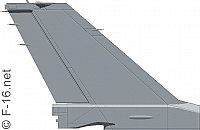Agile Falcon
In 1984, General Dynamics proposed the Agile Falcon as a counter to new Soviet fighters such as the MiG-29 and the Su-27. It was designed to make use of some of the already-planned improvements to the Fighting Falcon known as MSIP IV. In addition, it had a 25-percent larger wing and was powered by an improved General Electric F110-GE-129 or Pratt & Whitney F100-PW-229 engine. Very little interest was attracted at that time.

Not giving up easily, General Dynamics proposed the Agile Falcon as a low-cost alternative to the F-22 Advanced Tactical Fighter. It is intended for the US and the four original NATO members, General Dynamics arguing that the new European fighters such as the Dassault Rafale and the SAAB Gripen lacked the performance and avionics to dominate the MiG-29/Su-27 threat.
In October of 1987, the USAF announced that they might develop the Agile Falcon on its own even if the European partners backed out of the program. However, in the current military drawdown, the Agile Falcon program remains in limbo, and is unlikely to proceed any further.
F-16AT, Falcon 21
The Falcon 21 or F-16AT was proposed in 1990 as a low-cost alternative to the ATF. It was to use the basic F-16XL design, along with one of the proposed ATF engines. However, it was to use a trapezoidal delta wing rather than the F-16XL's cranked-arrow wing.
CK-1 test bed fighter
The CK-1 is an F-16D "Block 40" test bed fighter, built by Lockheed according to MANAT's specifications. (MANAT is the IAF Flight Test Center). This version is packed with sensors, measuring control surface movements and the airplane's rhythm of reaction to those movements. All measurements are delivered and analysed in "real time", to a test engineer sitting at the back seat. Special sensors are built into the CK-1 along the wing's root, measuring wing flatter and torsion forces. Other sensors could be installed in external pods or even at an extension attached to the fighter's nose.
The IAF intends to use this airplane to test various flying configurations, new avionics, and conduct weapon system delivery tests. The CK-1 would also be used to conduct various test flights in which the F-16s flying qualities would be further investigated.
Production Extension
The last USAF F-16 on order is scheduled for delivery in 1997, and the last foreign one in 1999. Lockheed Fort Worth Company (LFWC) announced on July 6th, 1994 that it had offered the Air Force a block of cheap F-16s in an effort to extend the type's production life. These would be Block 50D F-16Cs which would cost only $20 million per aircraft, a reduction of about $3 million over the "standard" F-16C, made possible, it was said, by new manufacturing techniques and process improvements. The USAF is expected to have a shortfall of about 100 F-16s by the end of the century due to attrition and the retirement of older aircraft.
Please use this form to add any list any error or omissions you find in the above text.
Note: your comments will be displayed immediately on this page. If you wish to send a private comment to the webmasters, please use the Contact Us link.

